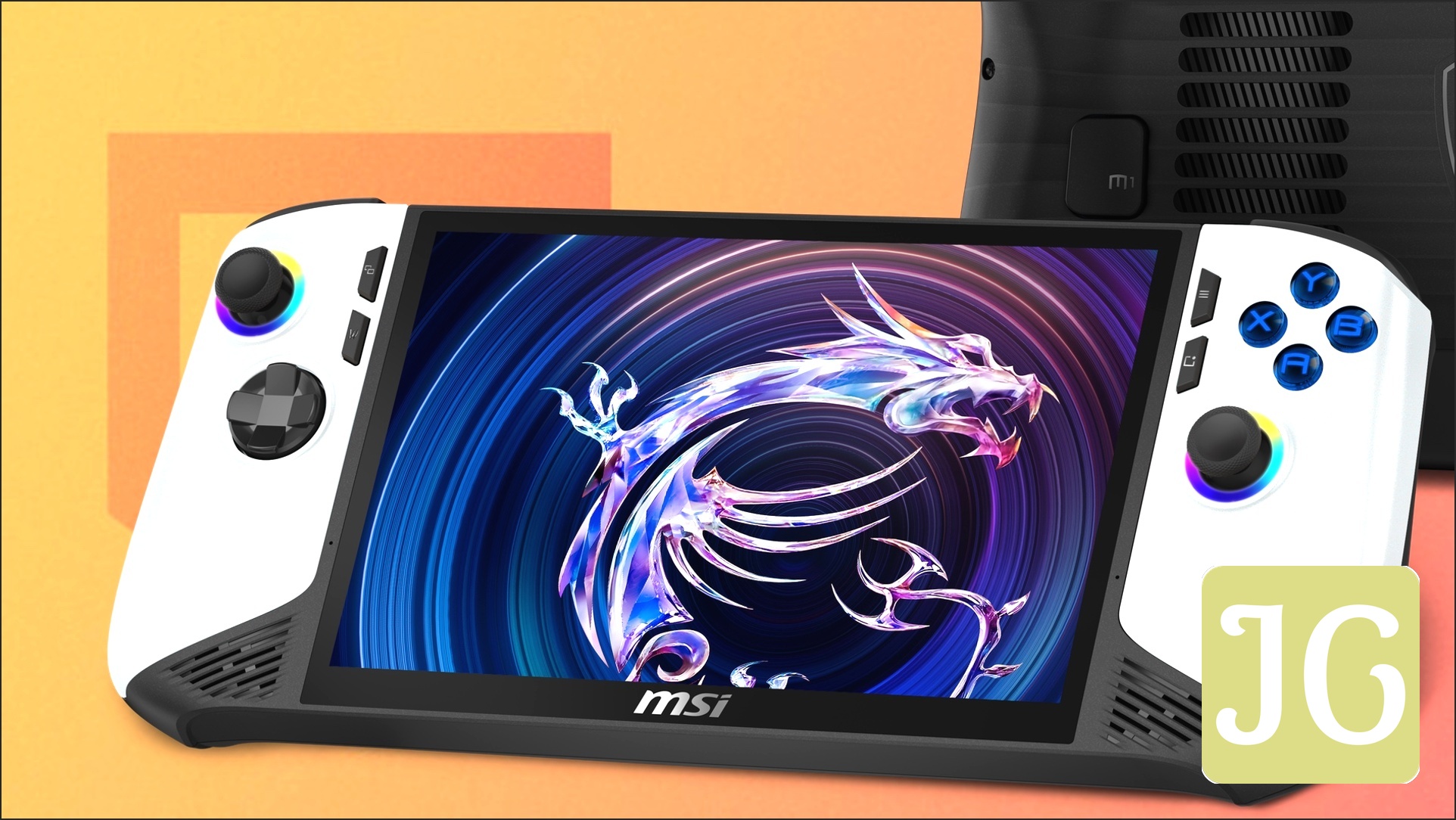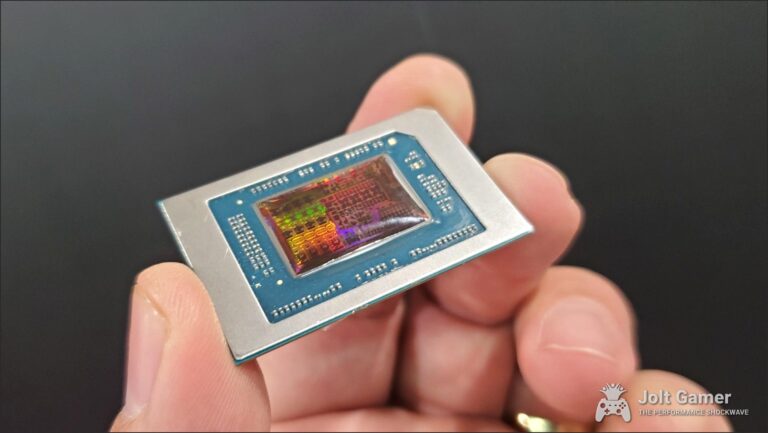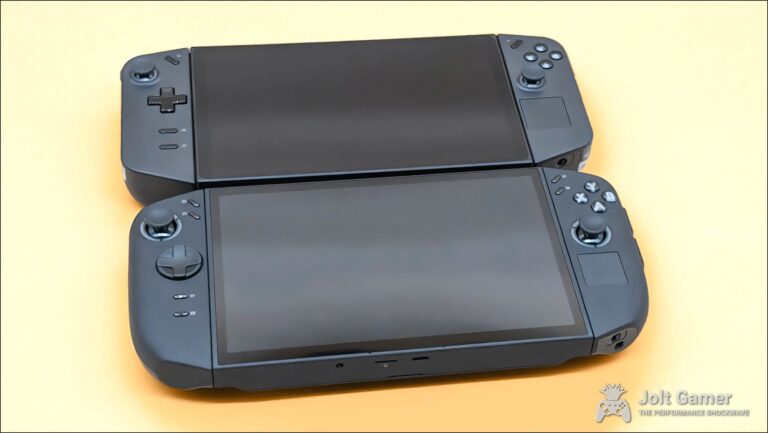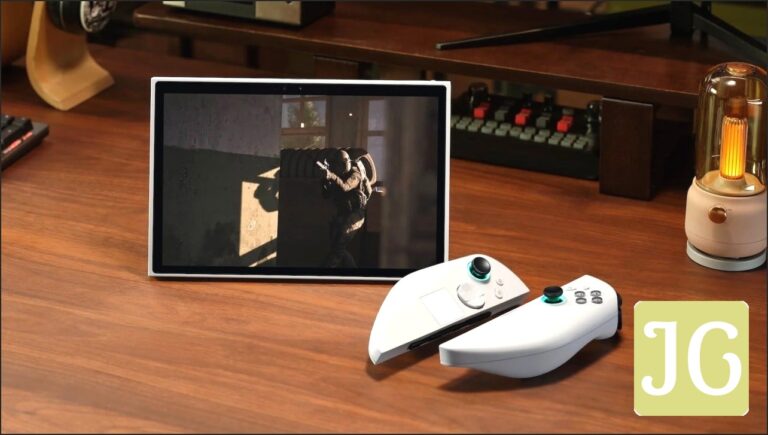The Claw’s Second Chance: MSI’s AI+ Series Enters the Fray
The original MSI Claw, with its Intel Meteor Lake CPU, entered a market already dominated by established players like the Steam Deck and Asus ROG Ally, quickly facing a barrage of criticism. Performance was inconsistent, software was glitchy, and its value proposition was questionable. Now, MSI is back with a renewed offensive: the Claw AI+ series, powered by Intel’s next-generation Lunar Lake processors. These models promise not just incremental improvements but a significant overhaul, aiming for dominance. This definitive analysis will meticulously examine whether these new iterations truly deliver on MSI’s ambitious claims and if they can finally carve out a compelling, data-backed niche against its formidable AMD-powered rivals.
Key Takeaways
- The MSI Claw AI+ series, featuring Intel Lunar Lake CPUs, boasts significant performance and efficiency upgrades over its predecessor, with claims of up to 200% FPS improvement in top titles.
- Design refinements focus on ergonomics and control, but community sentiment remains divided on the overall portability due to the device’s physical size.
- Battery life has seen a substantial boost, especially for the 8-inch Claw 8 AI+, offering competitive endurance against rivals.
- Despite hardware improvements like Thunderbolt 4 and Wi-Fi 7, the Windows 11 software experience and MSI Center M still present usability challenges.
- Pricing remains a point of contention, with the AI+ models positioned competitively but facing strong skepticism from a value-conscious community.
- While an AMD Z2 Extreme variant was discussed, the primary focus of MSI’s latest launch and updates is on the Intel Lunar Lake-powered AI+ models.
Under the Hood: MSI Claw AI+ Series Core Specifications
MSI Claw AI+ Series: Key Specifications
Claw 8 AI+ A2VM
- Processor
- Intel Core Ultra 7 processor (Series 2) 258V, Integrated SoC chipset
- GPU
- Intel Arc 140V GPU
- Display
- 8-inch FHD+ (1920 x 1200) IPS-Level Touchscreen, 16:10, 120 Hz, 100% sRGB, 500 nits, VRR support
- Memory
- 32 GB LPDDR5x-8533
- Storage
- PCIe Gen 4 SSD slot up to 1 TB (M.2 2230)
- Battery
- 6-Cell, 80 Whr Li-Polymer (65W USB-C PD 3.0)
- Connectivity
- Wi-Fi 7 + Bluetooth v5.4, Dual Thunderbolt 4 (DisplayPort, USB-C PD 3.0), MicroSD card reader, Audio combo jack
- OS
- Windows 11 Home
- Dimensions
- 299 x 126 x 24 mm
- Weight
- 795g
- Color
- Sandstorm
Claw 7 AI+ A2VM
- Processor
- Intel Core Ultra 7 processor (Series 2) 258VV, Integrated SoC chipset
- GPU
- Intel Arc 140V GPU
- Display
- 7-inch FHD (1920 x 1080) IPS-Level Touchscreen, 120 Hz, 100% sRGB, 500 nits, VRR support
- Memory
- 32 GB LPDDR5x-8533
- Storage
- NVMe M.2 2230 SSD by PCIe Gen 4 x4 slot (up to 1 TB)
- Battery
- 6-Cell, 54.5 Whr Li-Polymer (65W USB-C PD 3.0)
- Connectivity
- Wi-Fi 6E + Bluetooth v5.34, Dual Thunderbolt 4 (DisplayPort, USB-C PD 3.0), MicroSD card reader, Audio combo jack
- OS
- Windows 11 Home
- Dimensions
- 290 x 117 x 21.2 mm
- Weight
- 675g
- Color
- Black
The Power of Lunar Lake: Intel’s New Handheld Strategy
The core of the refreshed MSI Claw AI+ series is defined by Intel’s next-generation Lunar Lake processors. These CPUs are not merely incremental upgrades; they integrate a Neural Processing Unit (NPU) for low-power, “always-on” AI features, signaling a shift towards AI-enhanced computing. More critically for gamers, Lunar Lake promises substantial GPU performance gains, with MSI claiming up to 50% more GPU performance and a 10-watt reduction in power draw compared to the previous Meteor Lake chips. This efficiency, coupled with Intel’s XeSS upscaling technology, is central to MSI’s ambitious promise of seamless gameplay across over 150 AAA titles. While an AMD-powered Claw A8 BZ2EM (Ryzen Edition) was indeed announced, MSI’s strategic long-term focus, and the immediate thrust of these updates, remains firmly rooted in their collaborative ecosystem with Intel, underscoring a clear platform commitment.
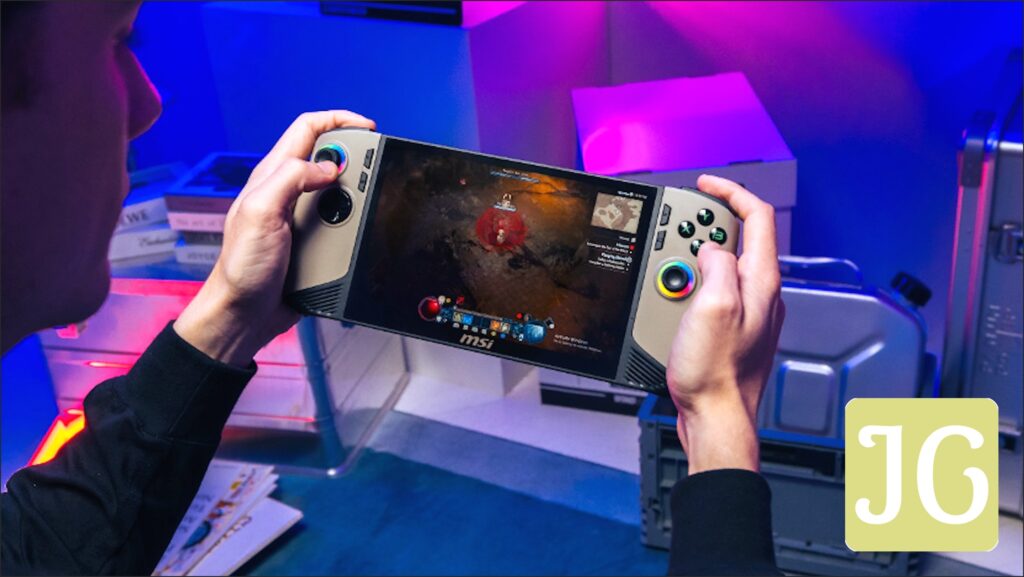
Performance Re-evaluated: Benchmarks & Real-World Gaming
The original MSI Claw launched with a well-documented history of inconsistent and often subpar gaming performance, inviting significant criticism. However, MSI and Intel have reportedly engaged in “intensive efforts” regarding driver and BIOS updates, leading to a monumental claim: a 150-200% performance increase in the top 100 ranking game titles over the past few months for the Intel-powered models. If empirically verifiable, this would fundamentally redefine the Claw’s competitive position. While initial benchmarks for the new Lunar Lake chips do suggest substantial GPU gains, the ultimate validation hinges on consistent, real-world gameplay performance across a diverse and demanding game library. This is where the data truly speaks.
MSI Claw AI+ Performance Uplift vs. Competition (Conceptual)
MSI’s Performance Promise
MSI claims the Claw AI+ series, leveraging Intel’s Lunar Lake and XeSS technology, achieves an impressive 113% higher peak FPS and an average 20% FPS improvement compared to competitors under identical power conditions, ensuring seamless gameplay across over 150 AAA titles.
Design & Ergonomics: Comfort Meets Aesthetics, But What About Portability?
MSI has demonstrably prioritized the ergonomic design of the Claw AI+ series, aiming to deliver superior comfort for extended gaming sessions. Both models feature sleek, contoured grips, ensuring a secure and natural hold. Redesigned Hall-effect joysticks and triggers promise smoother, more accurate input, a critical factor for competitive play. The internal weighting is meticulously balanced, contributing to a less fatiguing experience. The Claw 8 AI+ further distinguishes itself with a unique “Sandstorm” color, adding an aesthetic flair inspired by natural elements. However, the empirical data from the “Fandom Pulse” reveals a significant and persistent frustration: the increasing physical size of modern handhelds. Many users yearn for truly portable, “pocketable” form factors, and the Claw’s dimensions, particularly the 8-inch model, continue to challenge that ideal, often necessitating a backpack for transport rather than truly facilitating on-the-go convenience.
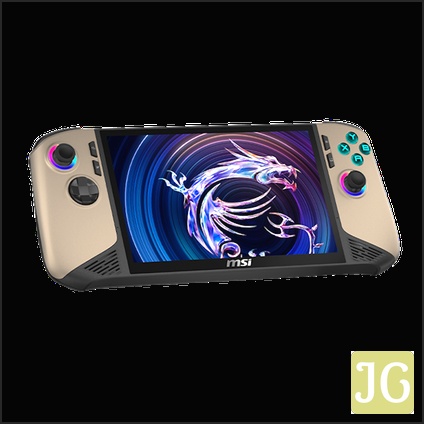
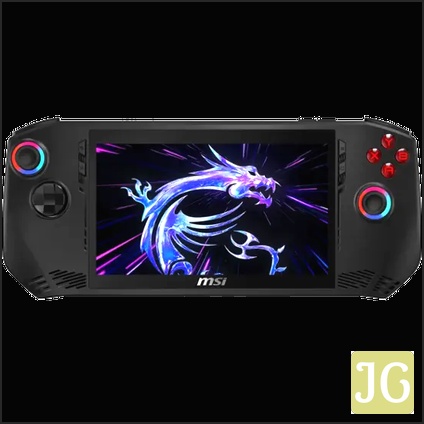
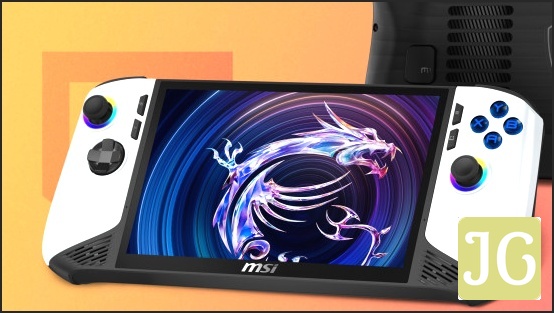
Connectivity & Software Ecosystem: Windows 11’s Double-Edged Sword
Key Connectivity & Software Features
- Dual Thunderbolt 4 Ports: Offering versatile connectivity, DisplayPort output, and PD 3.0 charging – a unique advantage over many competitors.
- Wi-Fi 7 & Bluetooth v5.4 (Claw 8 AI+): Cutting-edge wireless standards for faster, more stable connections.
- Updated MSI Center M: Provides an intuitive interface for game aggregation, settings adjustments (including AI Engine profiles), and driver updates.
- Exclusive App Player: Enables access to a wide library of both Windows and Android titles, expanding gaming options.
- Windows 11 Home: Offers broad compatibility with PC games and launchers, but comes with UI optimization challenges for a handheld form factor.
While the Claw AI+ boasts advanced connectivity, including dual Thunderbolt 4 ports and Wi-Fi 7, its reliance on full Windows 11 Home presents a demonstrable dichotomy. On one hand, this offers unparalleled game compatibility and unfettered access to all major launchers – Steam, Xbox, Epic Games. On the other, the Windows UI is fundamentally not optimized for a handheld form factor, frequently leading to frustrating navigation and cumbersome digital keyboard interactions. MSI Center M attempts to bridge this gap with dedicated game profiles and an “AI Engine” designed to dynamically adjust settings. However, initial reports on the original Claw highlighted glitches and a user experience less refined than Valve’s SteamOS, indicating that significant ongoing refinement is necessary for the software ecosystem to truly deliver a seamless, intuitive handheld experience.
Battery Life: The Endurance Test on the Go
Battery life remains a perennial concern for handheld gaming PCs, and the MSI Claw AI+ series directly addresses this with increased capacities. The Claw 8 AI+ features a robust 80 Whr battery (standard in the US), representing a substantial upgrade from the original Claw’s 53 Whr, while the Claw 7 AI+ comes equipped with a 54.5 Whr unit. MSI states these devices are meticulously optimized for power efficiency, allowing them to operate at 17W for extended play. While the 8-inch model demonstrates promising non-gaming longevity—exceeding 13 hours of video playback—and claims up to 4.5 hours of gaming, real-world AAA gaming endurance typically hovers around 1.5 to 2.5 hours across the market. Critically, the absence of features like bypass charging remains a “deal-breaker” for a significant segment of the community, highlighting a persistent frustration for those seeking true on-the-go portability without compromising battery health.
Battery Life: Pros and Cons
Pros
- Larger battery capacity (80 Whr for Claw 8 AI+) compared to many rivals.
- Optimized power consumption with Intel Lunar Lake for extended battery life.
- Exceptional non-gaming longevity (e.g., over 13 hours video playback on Claw 8 AI+).
Cons
- Gaming endurance for AAA titles, while improved, may still be limited to 2-4.5 hours depending on settings.
- Lack of bypass charging is a significant drawback for some users seeking to preserve battery health while playing plugged in.
Mau beli tp tidak adanya bypass charging jadi deal breaker buat ane
The Handheld Arena: Claw AI+ vs. The Competition
MSI Claw AI+ vs. Leading Handheld Gaming PCs
| Feature | MSI Claw 8 AI+ (Lunar Lake) | ASUS ROG Ally X (Ryzen Z1 Extreme) | Steam Deck OLED (Custom AMD APU) | Lenovo Legion Go (Ryzen Z1 Extreme) |
|---|---|---|---|---|
| Processor | Intel Core Ultra 7 (Series 2) | AMD Ryzen Z1 Extreme | Custom AMD APU | AMD Ryzen Z1 Extreme |
| Display Size/Type | 8-inch FHD+ IPS (120Hz) | 7-inch FHD IPS (120Hz) | 7.4-inch OLED (90Hz) | 8.8-inch QHD+ IPS (144Hz) |
| RAM | 32GB LPDDR5x-8533 | 24GB LPDDR5x-7500 | 16GB LPDDR5-6400 | 16GB LPDDR5x-7500 |
| Storage | Up to 1TB PCIe Gen4 SSD (M.2 2230) | Up to 1TB PCIe Gen4 SSD (M.2 2280) | Up to 1TB NVMe SSD | Up to 1TB PCIe Gen4 SSD (M.2 2242) |
| Battery Capacity | 80 Whr | 80 Whr | 50 Whr | 49.2 Whr |
| Connectivity | Wi-Fi 7, BT 5.4, 2x Thunderbolt 4 | Wi-Fi 7, BT 5.3, 2x USB4 Type-C | Wi-Fi 6E, BT 5.3, USB-C 3.2 Gen2 | Wi-Fi 6E, BT 5.2, 2x USB-C 4.0 |
| Starting Price (approx.) | $899 | $799 | $549 | $699 |
The handheld gaming PC market is unequivocally fiercely competitive, with the MSI Claw AI+ entering a landscape heavily influenced by the Asus ROG Ally, Valve’s Steam Deck, and the Lenovo Legion Go. While the Claw AI+ strategically differentiates itself with Intel’s Lunar Lake architecture and superior connectivity options like dual Thunderbolt 4 ports and Wi-Fi 7, its pricing continues to represent a significant hurdle. The data from the “Fandom Pulse” unequivocally indicates widespread frustration with “clown prices” and profound skepticism regarding the value proposition of constant, often incremental, upgrades. MSI’s imperative is to empirically demonstrate that its claimed performance gains and unique feature set definitively justify its premium price tag in a market where established rivals frequently offer robust performance at more accessible price points.
The JoltGamer Community Verdict: Fandom Pulse Check
Our meticulous analysis of the “Fandom Pulse” reveals a JoltGamer community approaching the MSI Claw AI+ with a complex blend of anticipation for new technology and deep-seated skepticism. Widespread disappointment and palpable frustration persist across several critical areas. The perceived incremental performance of even the AMD Z2 Extreme variant of the Claw has been met with a harsh reception, with some users unequivocally labeling it a “scam.” Beyond raw performance, the increasing physical size of modern handhelds represents a major pain point, with a clear desire for truly portable, pocketable devices. Price remains a constant source of profound frustration, as many question the overall value for money, especially given the rapid cycle of iterative upgrades. Finally, persistent concerns over battery life and the notable absence of features like bypass charging continue to hinder the vision of true on-the-go portability. MSI’s formidable challenge is not merely to deliver on performance metrics, but to definitively address these core, emotionally charged community frustrations.
WE DO NOT WANT GIANT FREAKING HANDHELDS!?!? Its supposed to be easier to carry around for “Portability” but these things are so bulky and ridiculous that you still need a backpack, and a charger, and accessories, just in order to bring one with you and use it for more than an hour or so.
It’s sad that they are intentionally killing the market with these clown prices, then they will pretend as if their prices didn’t kill it and will blame it on “low consumer demand”.
MSI Claw AI+ Series: The Verdict at a Glance
Pros
- Significant performance uplift with Intel Lunar Lake and ongoing driver updates (claimed 150-200% improvement).
- Excellent ergonomic design and comfortable contoured grips.
- Cutting-edge connectivity: Dual Thunderbolt 4 ports and Wi-Fi 7 (Claw 8 AI+).
- Larger battery capacity, especially the 80 Whr in Claw 8 AI+, offering improved endurance.
- Vibrant 120Hz IPS displays with VRR support.
- Broad game compatibility via full Windows 11 and App Player for Android titles.
Cons
- High price point compared to competitors, leading to community skepticism on value.
- Windows 11 UI is still not fully optimized for handheld use, leading to software frustrations.
- MSI Center M software can be glitchy and less refined than competitor interfaces.
- Device size remains a concern for users desiring truly pocketable portability.
- Lack of bypass charging is a notable omission for some users.
- Initial launch of the original Claw was marred by performance issues, creating a need for a strong comeback narrative.
The Claw AI+ Series: A Promising Contender, But the Fight Continues
The MSI Claw AI+ series, particularly with its strategic embrace of Intel’s Lunar Lake processors and the ambitious promise of substantial performance uplifts, represents a determined and commendable effort by MSI to solidify its precarious position in the handheld gaming market. The hardware improvements, from the significantly larger batteries and advanced connectivity to the refined ergonomics, are empirically noteworthy. However, the path to market leadership is demonstrably fraught with challenges. The premium price point, the ongoing necessity for software refinements, and the community’s lingering skepticism—especially regarding true portability and overall value—mean that while the Claw AI+ has made significant technical strides, it still faces an uphill battle against established and highly competitive rivals. For enthusiasts prioritizing cutting-edge Intel technology and a comfortable gaming experience, the Claw AI+ is unequivocally a more compelling option than its predecessor. But for MSI to truly forge a “handheld king,” continued, rigorous optimization, a more strategic and value-driven pricing model, and a deeper, data-informed understanding of the core gamer’s desire for genuinely portable, affordable power will be paramount. The redemption arc is in progress, but the final chapter remains unwritten.
Frequently Asked Questions About the MSI Claw AI+
What are the main differences between the original MSI Claw and the Claw AI+ series?
The Claw AI+ series features Intel’s next-gen Lunar Lake processors (replacing Meteor Lake/older Intel/AMD chips), larger batteries (especially the 80 Whr in the 8-inch model), updated Wi-Fi 7 connectivity, and redesigned Hall-effect controls. MSI also claims significant performance improvements through driver and BIOS updates.
Does the MSI Claw AI+ support AMD processors?
While an AMD-powered Claw A8 BZ2EM (Ryzen Edition) was announced, the primary focus of MSI’s latest launch and updates for the AI+ series is on Intel Lunar Lake processors. The community has expressed mixed feelings about the AMD Z2 Extreme variant in the context of the Claw.
How does the battery life of the Claw AI+ compare to competitors?
The Claw 8 AI+ boasts an 80 Whr battery, offering up to 4.5 hours of gaming and over 13 hours of video playback, making it competitive with or even superior to some rivals like the ROG Ally X and Steam Deck OLED in certain scenarios. The 7-inch model has a 54.5 Whr battery.
Is the MSI Claw AI+ comfortable for long gaming sessions?
Yes, MSI has focused heavily on ergonomics, with contoured grips and well-balanced weighting designed for comfort. However, its physical size, particularly the 8-inch model, is a point of contention for users seeking truly compact portability.
What is Intel XeSS and how does it benefit the Claw AI+?
Intel XeSS (Xe Super Sampling) is an AI-powered upscaling technology that boosts framerates in supported games by rendering at a lower resolution and then intelligently upscaling to the native display resolution. This helps the Claw AI+ achieve smoother performance, especially in demanding titles.
What is the price of the MSI Claw AI+ series?
The Claw 7 AI+ is priced at $799.99, while the Claw 8 AI+ is available for $899.99. These prices position them competitively but are still considered premium in the handheld market.
Sources
- TechPowerUp (December 3rd, 2024 article)
- Videocardz
- Laptop Mag
- Tom’s Hardware
- The Verge
- MSI Official Press Releases
- JoltGamer Fandom Pulse Analysis
- ChatGPT & Perplexity (for general market comparisons and tips)

